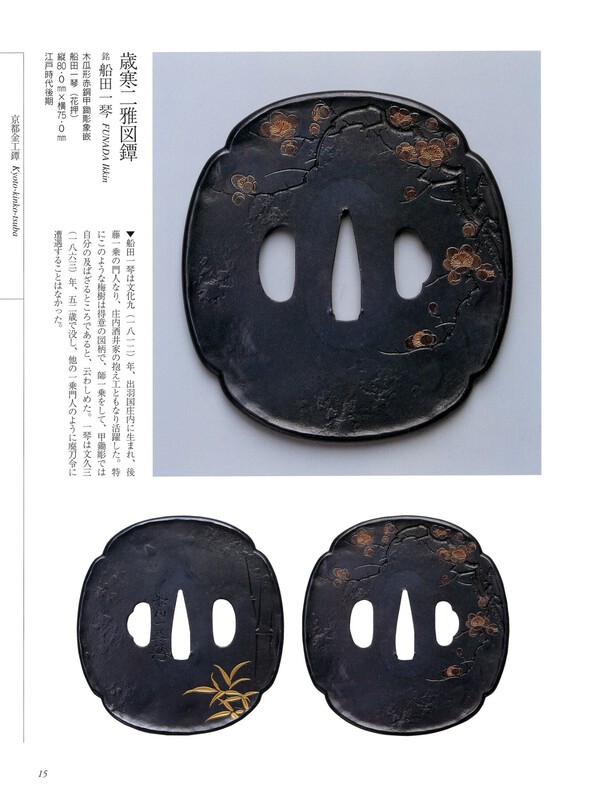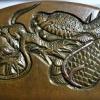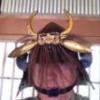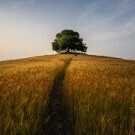All Activity
- Past hour
-
-
-
Bruce Pennington started following ... little help from my friends ...
-
Think that was a line from a Beetle's song Having trouble with this one. Can someone ID this guy for me? Thanks. 1942, but who?
-
That’s a very good and important point! Of course, not every blade that might qualify for Juyō is ever submitted for shinsa – sometimes due to financial reasons, lack of interest from the owner, or simply because the blade remains in a private collection and never resurfaces. So the actual number of high‑level blades is likely higher than what is officially certified. That said, the existing data still gives us a useful reference: we know how many blades are submitted each year and how many pass. From this, trends and approximate figures can be derived – not as an absolute truth, but as a guideline to understand just how rare Juyō, and especially Tokubetsu Juyō, pieces really are.
-
Just a very side comment: when comparing against "2 million registered Japanese swords" against J and TJ, keep in mind that not all persons have the money, ambition nor wish to submit blades for shinsa, to NBTHK, etc.. There will be blades that would achieve J, but are not submitted for J - for whichever reason. It is a tad of unrelated to put these numbers in comparison.
-
does any of this make sense? 表西光人 (Person of Light from the West) 製後一琴 (Made by Ikkin) 績成之 (This was accomplished [with merit]) Followed by a kaō (stylized seal)
-
Well, he said he had been lucky and held countless masterpieces that left him in awe but did mention one sword in particular. A wakizashi by Inoue Shinkai. He did go on to say that he doesn't collect swords but has a cheap tanto that holds a lot of memories, so i guess that was his favourite. Tired he said but the hamon was truly exquisite. I cant name that smith but he is not up there with the best. I think owning a sword a long time that has memories makes them that bit more special. I get that.
-
That's great, Shawn. Thanks. 表面 omote men, front side (?) 先人 senjin, people who went before, ancestors(?) (Just throwing these into the pot while doing other things!)
-
That’s a really interesting perspective, and I completely agree – the only way to truly understand these swords is through constant study and comparing as many examples as possible. I’m curious though – when you asked that dealer in Japan about the best blade he ever held, what was his answer? I’d really love to hear which sword left such a strong impression on him.
- Today
-
Hi Jussi, Thank you so much for taking the time to share these detailed numbers and your perspective. It really helps to put things into context. I’m glad to see that my own research on the approximate totals of Jūyō and Tokubetsu Jūyō swords wasn’t too far off from your figures – it’s reassuring to know we’re in a similar ballpark. I also want to say how much I appreciate the work you’ve done compiling and sharing these statistics. Having such an overview of the number of blades across all paper levels is incredibly valuable for collectors like me who are still learning to navigate the NBTHK system. Thank you as well for your kind words about my sword and this discussion – it means a lot coming from someone with your experience. Your contribution has really helped me understand the bigger picture, not just in terms of numbers, but also in how quality and attribution can be viewed differently within the community. Best regards, Dennis
-
Subjective, Have a lot of respect for those that really know these swords and the only way to know them is study them daily, not just one or two from a known smith, but many. Did ask a dealer in Japan once what the best blade blade he ever held was, expecting some Juyo candidate, was surprised with his answer and taught me a lesson.
-
New pictures have been uploaded, hopefully this provides better clarity. Thank you in advance for any help
-
Thank you Dennis for presenting your fine sword to the forum and starting extremely interesting discussion. As Markus posted the newest research by Tanobe sensei I admit I have bit hard time in understanding what he is saying. My conclusion was that in current research both blades with the short signatures and long signatures date approximately to same period? The term "bucket attribution" might sound belittling for blades but that is not my intention at all. It is just that some schools get a lot of blades attributed towards them, it just goes like that as in traditional sword appreciation it is often that very specific attribution gets given to mumei blades. I would be perfectly fine with more broader attributions but it is what it is. I posted this in May as I remember I posted this before. Here are the amount of swords NBTHK has had passing through each phase of their shinsa. The numbers are not 100% correct (I would have all Jūyō and Tokubetsu Jūyō data but I am not bothered to count every single item) but in the quite close neighbourhood and they will hopefully give you lot of insight. Starting from highest tier to lowest Tokubetsu Jūyō - c. 1,200 swords Jūyō - c. 12,000 swords Tokubetsu Hozon - c. 80,000 swords Hozon - c. 125,000 swords I admit I don't really understand quality in traditional appreciation sense. Quality as a term gets thrown around so often but my own view on it is biased. I don't think precious smiths or schools are synonym of highest quality (it is also likely I just don't understand them). However I have seen Masamune, Awataguchi, Ko-Bizen etc. that to me have not been that high quality swords, and in comparison I have seen splendid work by some less appreciated late Muromachi or Shintō schools. If attribution was all that was judged then there would not even be the need for multiple tiers of papers (well I understand some of the reasons for multiple tiers). However swords can be of weaker overall quality and still achieve high ranks on other extremely important features. I think there are actually many Jūyō Bunkazai blades that those who focus solely on quality would not really appreciate, and the opposite there are many Tokubetsu Jūyō blades that historically focused person like me might not appreciate that much even though they could be of very high quality.
-
Thanks for that
-
Sukemitsu The mei we typically see for Sukesada use a different kanji for Suke.
-
Mike Noel started following Help required
-
-
I am discovered.... I was going to bid on that kozuka. My feelings were Kyo-Goto (Waki-Goto). I didn't think Kaga Goto, but I could be wrong. My concern is the script is lacquer painted on, whereas the two mainline Goto ones I showed have it inlaid. I did archery a lot growing up. Not exactly Olympic level, but up there. Really loved it and am considering getting back into it. So- yeah, was going to try and pick this one up. Are you sure this is the same poem on this kozuka? The Goto ones are clearly Taira no Tadanori (or Tadahiro, is it?). I was less sure about this Waki-Goto one, as the script was hard for me to read and I had to dig up the Waka.
-
Matsunoki started following Kawari kabuto - sengoku no kisō tengai
-
Far too painful Piers. In any event I deleted all my netsuke images. That silver netsuke is beautiful. Don’t often find metal netsuke with lacquer pieces for the obvious reason….damage to the lacquer….but that looks like a proper match-up. Haven’t seen a ShiShi done like the one on the inro. It took me a minute to work it out. Unusual.
-
New price 100 Euro plus shipping
-
New price 100 Euro plus shipping
-
Make sure to check the schedule on the NBTHK website. The English-version of their site doesn't display it (at least for my browsers), and only gives the generic hours. Use a browser translation add on on the Japanse page. Otherwise you end up like I just did, finding out on your two-day Tokyo layover that the museum is closed for the week. Luckily I should be able to see it on my return.



















